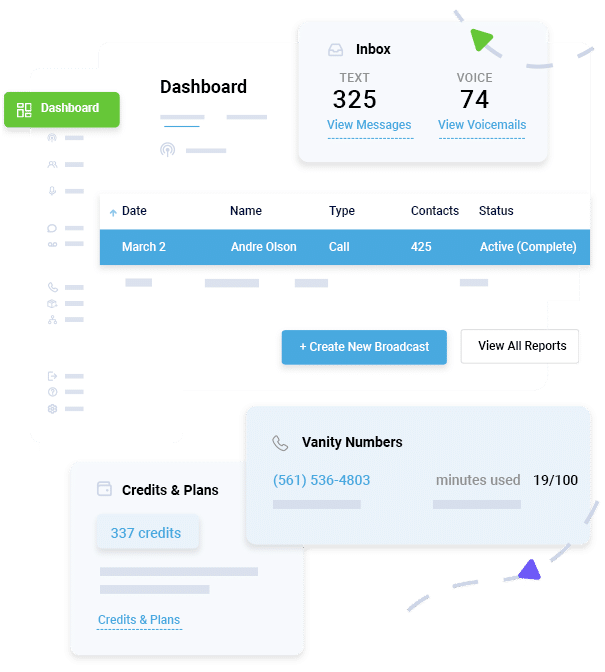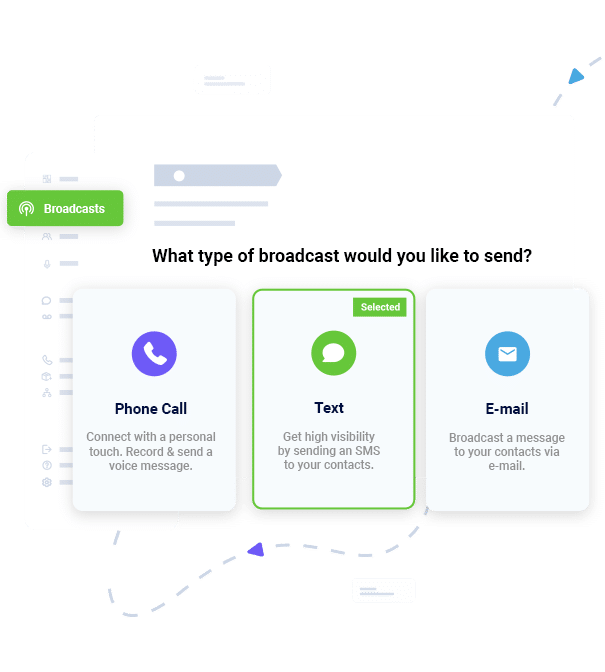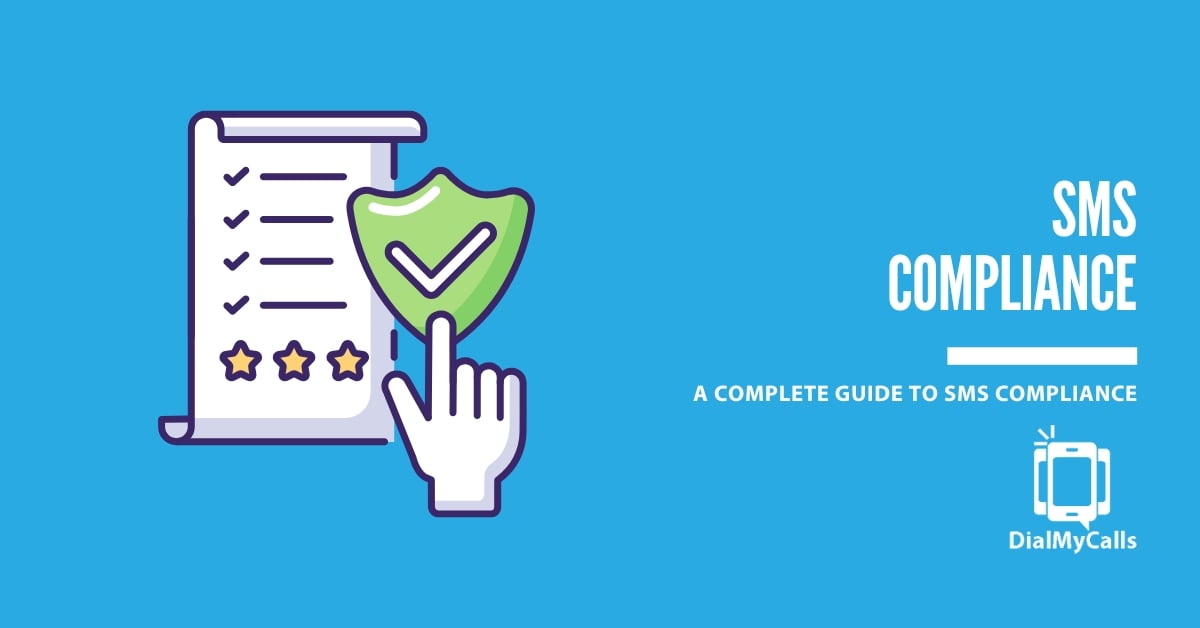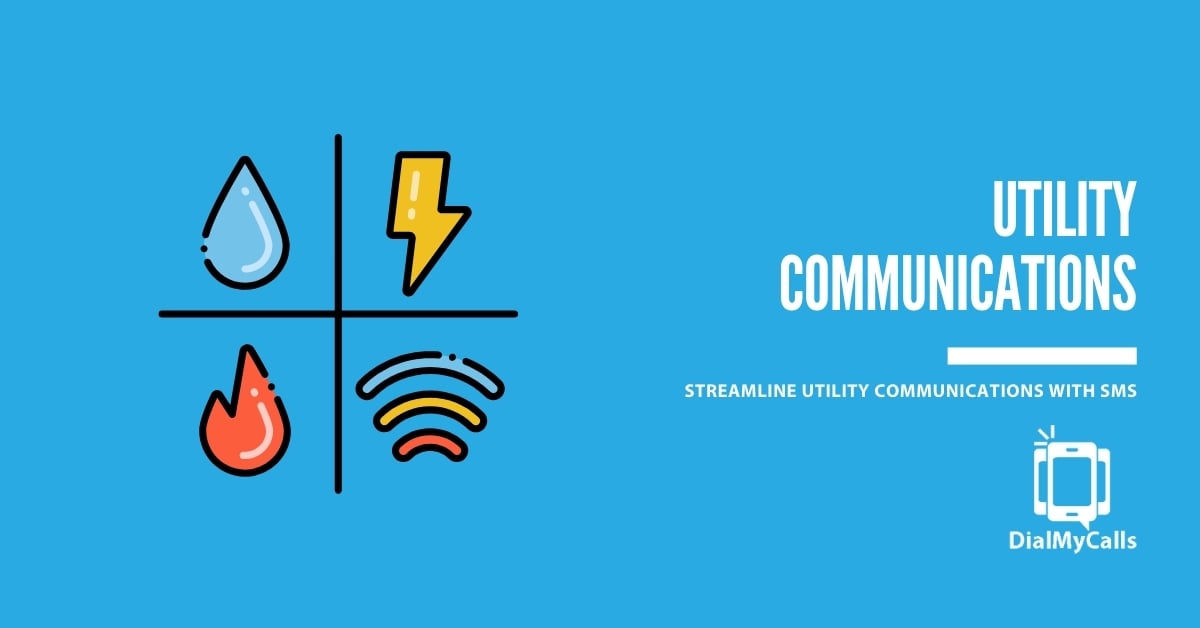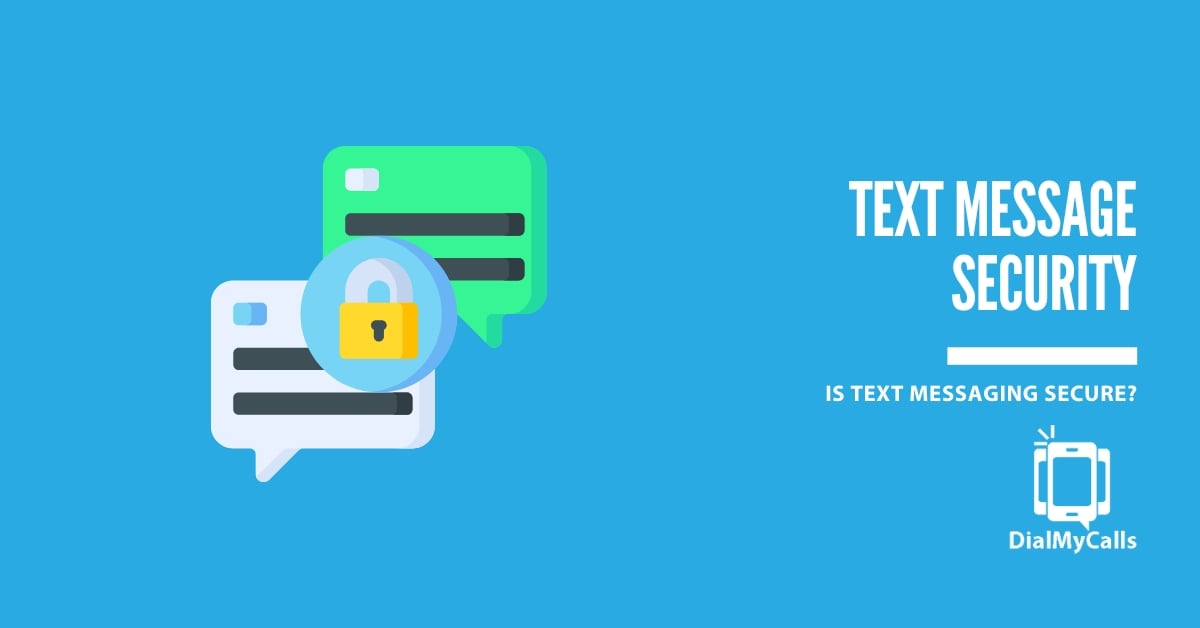Author
Tim Smith is the Media Manager at DialMyCalls, where he has leveraged his expertise in telecommunications, SaaS, SEO optimization, technical writing, and mass communication systems since 2011. Tim is a seasoned professional with over 12 years at DialMyCalls and 15+ years of online writing experience.
Try Using DialMyCalls Right Now
Start For FreeRecent Posts
- What are SMS Carrier Fees and How to Lower Your Costs
- 8 Creative SMS Marketing Ideas to Boost Engagement This Summer
- 15 Ways to Use QR Codes For Event Promotion & Attendee Engagement
- Top 6 Automated Calling Service Providers For Your Business
- Boost Customer Experience with QR Codes: From Menus to Payments
Categories
“I am a youth minister and have spent hours in the past calling students individually to remind them of an upcoming event or to get out an urgent announcement. With DialMyCalls.com, I cut that time down to about 1 minute. I also love how I can see exactly who answered live and how long they listened so I know if they heard the whole message. DialMyCalls.com is the best website I have stumbled upon all year! Thanks!”
Central Baptist Church
Try Using DialMyCalls Right Now
Start For FreeWhat are SMS Carrier Fees and How to Lower Your Costs
Posted by Tim Smith in General Post on April 15, 2025
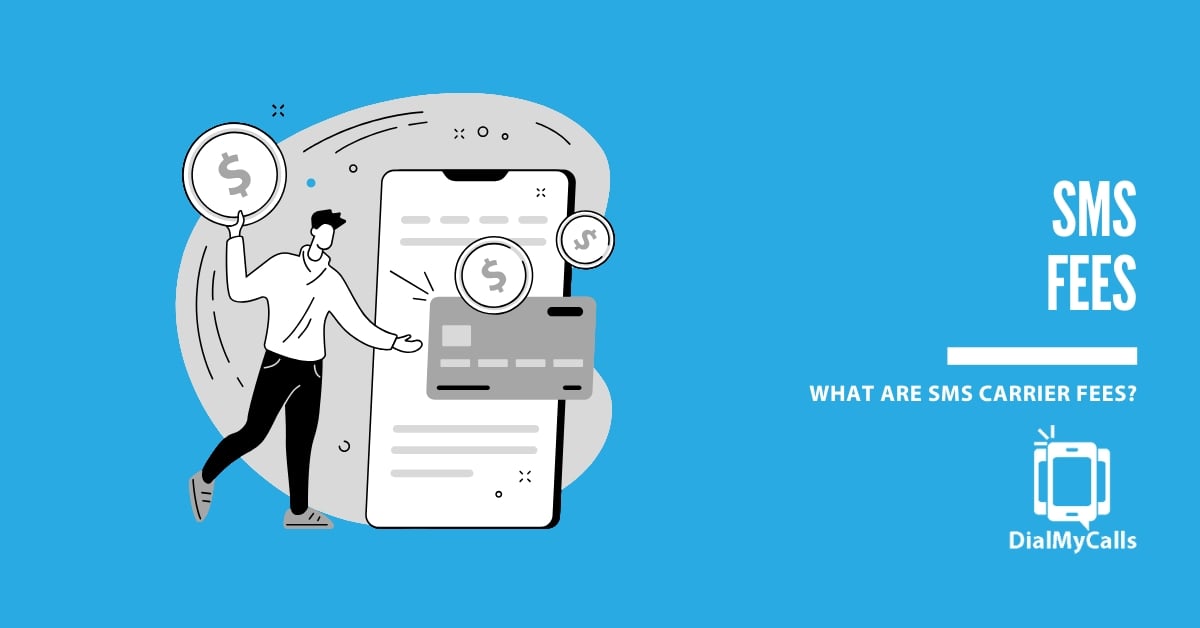
If your business relies on SMS to connect with customers, whether through alerts, promotions, appointment reminders, or two-way messaging, you’re probably familiar with the convenience and high engagement rates that text messaging delivers. But behind every message you send, there’s often a less-visible cost eating into your budget: SMS carrier fees.
Carrier fees are surcharges imposed by mobile carriers (like AT&T, Verizon, and T-Mobile) for delivering messages to their subscribers. These fees are in addition to the per-message rates you might pay to your SMS provider. And as messaging regulations evolve, so do these costs, making it essential for businesses to understand where their money is going and how to manage it effectively.
In this guide, we’ll walk through:
- What SMS carrier fees are and how they’re structured
- The different types of carrier fees businesses might encounter
- Key factors that influence your total messaging costs
- Actionable ways to reduce or even avoid unnecessary fees
Whether you’re a small business trying to optimize your communication spend or a SaaS company sending thousands of messages daily, this post will help you make smarter decisions about your SMS strategy, without compromising on deliverability or engagement. Let’s dive in.
Mass Texting, Made Easy
Send Bulk Text Message Campaigns in Seconds
What Are SMS Carrier Fees?
SMS carrier fees are surcharges added by mobile carriers, such as Verizon, AT&T, and T-Mobile, each time a business sends a text message to a recipient on their network. These fees are layered on top of your standard messaging rate charged by your SMS platform and are mainly out of the platform’s control.
These charges apply specifically to A2P (Application-to-Person) messaging, which includes any texts sent by businesses, platforms, or apps to individuals. Unlike P2P (Person-to-Person) texting, A2P traffic is regulated more strictly and subject to additional compliance requirements and fees.
Why Do Carriers Charge SMS Fees?
Mobile carriers justify these fees as a way to: maintain network integrity by deterring spam and fraudulent messaging, fund messaging infrastructure that supports high-volume, automated traffic, and encourage registration and compliance through programs like 10DLC and toll-free verification.
SMS vs. MMS: Different Formats, Different Fees
It’s also important to understand that SMS (Short Message Service) and MMS (Multimedia Messaging Service) are billed differently. Here’s a quick comparison:
| Message Type | Includes | Typical Use Cases | Carrier Fee (General Trend) |
|---|---|---|---|
| SMS | Text-only, up to 160 characters | Appointment reminders, promo codes | Lower |
| MMS | Images, videos, GIFs, and longer text | Coupons, event invites, branding | Higher |
The format you choose impacts not only engagement but also your overall messaging costs, especially once carrier fees are factored in.
Types of SMS Carrier Fees
Understanding the different types of SMS carrier fees is essential if you want to optimize costs. Carriers assign fees based on the type of message, how it’s sent, and the type of number used. Here’s a breakdown of the most common fee types businesses encounter:
1. A2P (Application-to-Person) Fees
These are the standard fees charged for any business-initiated SMS traffic. Whether you’re sending order confirmations, customer service updates, or marketing messages, A2P fees apply. These costs vary by carrier, and all major U.S. networks impose them.
Why they exist: To differentiate commercial traffic from person-to-person (P2P) communication and ensure accountability.
2. 10DLC (10-Digit Long Code) Fees
10DLC is a messaging solution that uses regular local numbers (like 555-123-4567) for high-volume A2P messaging. To use this route, businesses must register their brand and campaigns through The Campaign Registry (TCR). Registered numbers enjoy better delivery rates and lower per-message fees than unregistered numbers.
| 10DLC Type | Fee Impact |
|---|---|
| Registered | Lower fees, preferred by carriers |
| Unregistered | Higher fees, risk of message blocking |
3. Toll-Free SMS Fees
Toll-free numbers (e.g. 1-800 numbers) can also send SMS messages, and they’re a great fit for customer support and two-way communication. However, verification is key. Verified toll-free numbers benefit from reduced fees and higher deliverability, while unverified ones face increased costs and message filtering.
4. Short Code Fees
Short codes are 5- or 6-digit numbers used for high-throughput messaging, like “Text SAVE to 12345.” They offer speed and brand recognition but come at a premium.
Dedicated Short Codes
Used by one business only – come with higher setup and monthly fees.
Vanity Short Codes
Custom, easy-to-remember numbers that cost even more.
Short codes often have fewer per-message carrier surcharges but higher overall ownership costs.
5. International SMS Fees
If your business sends messages outside the U.S., expect additional fees for cross-border delivery. These vary by destination country and carrier, and some markets (like Canada or the UK) may have specific compliance requirements that affect pricing.
6. Spam or Non-Compliance Penalties
Not exactly a fee, but definitely a cost, non-compliance with carrier rules (like sending unregistered messages or exceeding daily volume limits) can lead to:
- Message blocking
- Carrier filtering
- Fines or surcharges
Staying compliant isn’t just best practice, it’s a cost-saving necessity.
Factors That Affect SMS Carrier Fees
Carrier fees aren’t one-size-fits-all. Your total messaging cost can vary widely depending on several technical and strategic factors. Knowing what influences these fees can help you make smarter choices when sending SMS at scale.
1. Message Type (SMS vs. MMS)
As mentioned earlier, the format of your message affects the carrier surcharge.
- SMS is more affordable and widely supported.
- MMS allows for media and longer content but typically comes with higher carrier fees.
Tip: Use SMS for basic notifications and reserve MMS for high-impact content like visuals or branded campaigns.
2. Number Type Used
Different number types are subject to different fee structures:
| Number Type | Pros | Fee Considerations |
|---|---|---|
| 10DLC | Local feel, cost-effective | Requires registration to minimize fees |
| Toll-Free | Good for customer service | Verified numbers reduce fees |
| Short Code | High throughput | High setup cost, but stable per-message fees |
| Unregistered Numbers | Easy setup | Higher fees, risk of being blocked |
3. Destination & Region
Carriers impose fees based on where your messages are going:
- Domestic messages (U.S.): Standardized carrier fees across major networks
- International messages: Variable costs based on destination country and individual carrier agreements
If you’re sending to multiple countries, using a provider with strong global infrastructure can help avoid inflated fees.
4. Carrier-Specific Rules and Rates
Each U.S. carrier sets its own A2P messaging policies and fee structures. For example:
- T-Mobile has a “pass-through fee” for certain unregistered traffic.
- Verizon may enforce stricter delivery standards for short codes or unregistered numbers.
Keeping up with these carrier-specific policies, often published on their websites, is key to preventing unexpected charges.
5. Message Volume and Frequency
High-volume senders may qualify for negotiated rates through their SMS provider, especially if their messaging traffic is:
- Consistent
- Compliant
- Opted-in and relevant
But blasting too many messages too frequently? That can lead to higher fees, throttling, or even blocking by carriers.
Maximize Outreach, Save Time
Start Transforming Your Communication with Mass Texting
6. Compliance and Verification Status
- Verified toll-free numbers
- Properly registered 10DLC campaigns
- CTIA-compliant messaging practices
All of these can lower your carrier costs by ensuring smoother delivery and avoiding penalties.
7 Ways to Lower Your SMS Carrier Costs
While SMS remains one of the most effective communication tools for businesses, managing carrier fees is key to keeping your ROI strong. Below are seven proven strategies to help reduce unnecessary costs, without sacrificing deliverability or customer engagement.
1. Choose the Right Messaging Route
Different types of phone numbers come with different cost structures. Selecting the right one for your use case can make a big difference in long-term savings:
- Use 10DLC for local business messaging, which is cost-effective and carrier-approved
- Go with toll-free numbers for two-way support or large-scale alerts
- Avoid unregistered or shared long codes, which can incur higher fees and message filtering
Tip: If you’re starting out, verified toll-free often offers a good balance of affordability and deliverability.
2. Register for 10DLC or Verify Your Toll-Free Number
Registration isn’t just about compliance, it directly impacts your bottom line. Carriers reward verified and registered numbers with:
- Lower per-message surcharges
- Better delivery rates
- Fewer penalties or blocks
Whether you’re using a toll-free number or 10DLC, taking the time to register and verify your campaigns pays off in both performance and reduced costs.
3. Use an SMS Provider That Negotiates Carrier Rates
Not all SMS platforms are created equal. Some providers, like DialMyCalls, work directly with carriers to negotiate favorable rates on behalf of their customers. These partnerships can help you:
- Lower your effective cost per message
- Stay ahead of changes in carrier policies
- Maintain high deliverability across multiple networks
Working with a provider that absorbs or minimizes carrier fees can significantly reduce your overall spend.
4. Reduce Message Frequency and Eliminate Redundancy
More messages don’t always equal better results. Trim the fat by:
- Consolidating updates (e.g., appointment time + location in one message)
- Segmenting your list so customers only get relevant content
- Automating message schedules to avoid over-sending
Fewer, smarter messages can help you avoid unnecessary charges while keeping your audience more engaged.
5. Send Concise Messages to Avoid Splitting
A single SMS can hold up to 160 characters. If your message goes beyond that, it’s often split into two or more parts, each billed individually with additional carrier fees.
- Keep messages short and to the point
- Use links or landing pages for more detail
- Avoid unnecessary punctuation or formatting that takes up space
Even a few extra words can lead to double the cost if you’re not careful.
6. Leverage Alternative Channels When Appropriate
While SMS is powerful, it’s not the only tool in your communication toolbox. Consider blending your strategy with:
- RCS (Rich Communication Services) for enhanced Android messaging
- Email-to-SMS for certain alerts
- Push notifications if you have a mobile app
These alternatives won’t always replace SMS, but they can offload non-critical messages and reduce your carrier fee burden.
7. Monitor Usage and Audit Regularly
Lastly, regularly review your message reports and costs. Look for:
- Unexpected spikes in fees
- High bounce or opt-out rates
- Messages that could be consolidated or removed
Most SMS platforms (including DialMyCalls) offer dashboards and usage logs to help you identify cost-saving opportunities.
Conclusion
SMS remains one of the most effective ways to reach customers, but without a solid understanding of carrier fees, your messaging budget can spiral out of control. From A2P surcharges to the nuances of 10DLC registration and toll-free verification, there are many hidden costs that businesses often overlook.
The good news? With the right strategy and tools, you can take control of your messaging expenses. By doing the following, you’ll be better positioned to drive results without overspending: choosing the right messaging routes, registering and verifying your numbers, reducing message volume without sacrificing engagement, and partnering with a provider that helps optimize carrier costs.
At DialMyCalls, we make it easy to manage your SMS communications while helping you minimize costs and stay compliant. Whether you’re sending one-time alerts, ongoing marketing messages, or running a two-way customer support line, we’re here to help you do it smarter.
- Explore our mass texting service
- Learn more about SMS marketing best practices
- Or get started with 2-way text messaging
Ready to reduce your SMS carrier fees? Contact us today to talk with a messaging specialist and find the best solution for your business.
Reach Thousands, Instantly
Grow Your Business by Leveraging Mass Texting
